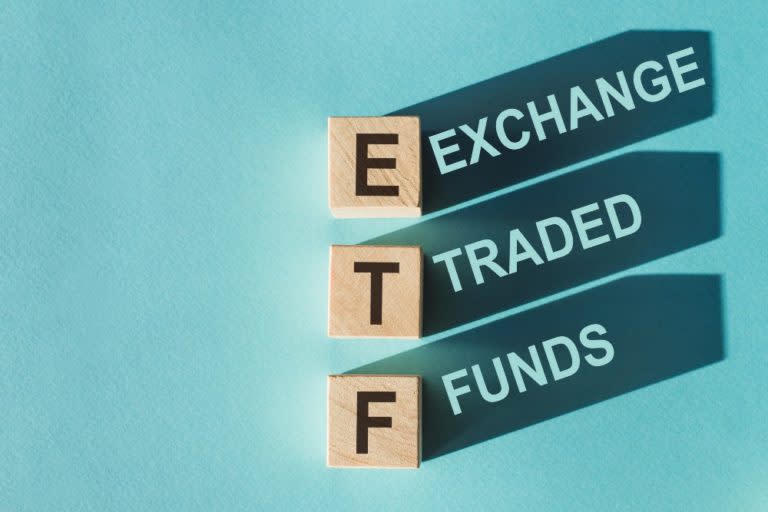2 Canadian ETFs to Buy and Hold Forever in Your TFSA

Written by Aditya Raghunath at The Motley Fool Canada
The Tax-Free Savings Account, or TFSA, was introduced in 2009 and has since gained popularity among Canadian investors. This registered account allows you to hold a variety of asset classes, such as stocks, bonds, mutual funds, and exchange-traded funds. Moreover, any returns generated in the TFSA are sheltered from Canada Revenue Agency (CRA) taxes, which helps accelerate the wealth-building process.
The TFSA contribution room in 2024 has increased by $7,000, up from $6,500 in 2023. This means the maximum cumulative TFSA contribution limit stands at $95,000 in 2024. But how should investors allocate their TFSA contribution room right now?
Invest in exchange-traded funds
The primary aim of investing is to beat inflation and create a nest egg for retirement. So, you need to allocate your savings towards asset classes that have outpaced inflation over time. Historically, the stock market has consistently beaten inflation and created game-changing wealth for shareholders. However, investing in equities might seem risky, especially for new participants who don’t have the time or expertise to identify quality companies.
A low-cost way for Canadian investors to gain exposure to the stock market is through exchange-traded funds (ETFs). Basically, ETFs hold a basket of stocks across multiple sectors, offering diversification.
Investors should choose passive funds that track a particular index, such as the S&P 500, which offers exposure to some of the largest companies in the world. In the last six decades, the S&P 500 index has returned over 10% annually to shareholders in dividend-adjusted gains. Additionally, the fund’s top holdings include big-tech companies such as Microsoft, Apple, Alphabet, Nvidia, and Amazon.
Vanguard S&P 500 Index ETF (TSX:VSP) is a low-cost Canadian ETF that tracks the S&P 500 index. With more than $3 billion in assets under management, the VSP ETF is among the most popular funds in Canada. The ETF is hedged to the Canadian dollar, sheltering investors from fluctuations in foreign exchange rates.
The ETF has returned 13.3% annually in the last five years, which is exceptional. In addition to capital gains, the VSP ETF offers a forward yield of 1.1%.
Invest in the XDIV ETF
Income-seeking investors may consider holding ETFs such as iShares MSCI Canadian Quality Dividend Index ETF (TSX:XDIV) in their TFSA. The XDIV ETF is a portfolio of Canadian stocks with above-average dividend yields and steady or increasing payouts. It selects companies with strong financials and lower earnings volatility.
The XDIV ETF’s top holdings include high-dividend TSX stocks such as Suncor Energy, Pembina Pipeline, and Fortis, which account for roughly 30% of the fund. Additionally, the ETF pays shareholders a monthly dividend of $0.10 per share, translating to a forward yield of more than 4%.
While the VSP ETF is tech-heavy, the XDIV fund offers additional diversification. For instance, the financials sector accounts for 41.2% of the fund, followed by the energy sector at 24.3% and the utilities sector at 17.1%.
Canadian investors can identify other such ETFs to further diversify their TFSA portfolio in 2024.
The post 2 Canadian ETFs to Buy and Hold Forever in Your TFSA appeared first on The Motley Fool Canada.
Should you invest $1,000 in Vanguard S&p 500 Index Etf (cad-hedged) right now?
Before you buy stock in Vanguard S&p 500 Index Etf (cad-hedged), consider this:
The Motley Fool Stock Advisor Canada analyst team just identified what they believe are the 10 best stocks for investors to buy now… and Vanguard S&p 500 Index Etf (cad-hedged) wasn’t one of them. The 10 stocks that made the cut could potentially produce monster returns in the coming years.
Consider MercadoLibre, which we first recommended on January 8, 2014 ... if you invested $1,000 in the “eBay of Latin America” at the time of our recommendation, you’d have $15,578.55!*
Stock Advisor Canada provides investors with an easy-to-follow blueprint for success, including guidance on building a portfolio, regular updates from analysts, and two new stock picks each month – one from Canada and one from the U.S. The Stock Advisor Canada service has outperformed the return of S&P/TSX Composite Index by 32 percentage points since 2013*.
See the 10 stocks * Returns as of 3/20/24
More reading
Can You Guess the 10 Most Popular Canadian Stocks? (If You Own Them, You Might Be Losing Out.)
How to Build a Bulletproof Monthly Passive-Income Portfolio in 2024 With Just $25,000
Suzanne Frey, an executive at Alphabet, is a member of The Motley Fool’s board of directors. John Mackey, former CEO of Whole Foods Market, an Amazon subsidiary, is a member of The Motley Fool’s board of directors. Fool contributor Aditya Raghunath has positions in Fortis. The Motley Fool recommends Alphabet, Amazon, Apple, Fortis, Microsoft, Nvidia, and Pembina Pipeline. The Motley Fool has a disclosure policy.
2024

 Yahoo Finance
Yahoo Finance 